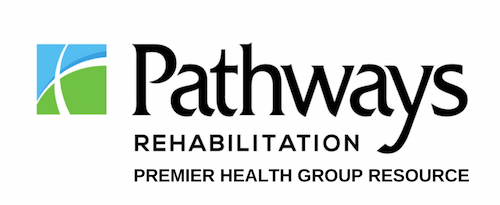Will the future of addiction recovery take place on video conference screens and emailed notes? Even a few months ago, treating addiction patients remotely might seem like a stretch at first listen — metaphorically, geographically, and medicinally. But now, as the Covid-19 crisis puts pressure on outpatient providers to
Click here to view original web page at medcitynews.com

Will the future of addiction recovery take place on video conference screens and emailed notes? Even a few months ago, treating addiction patients remotely might seem like a stretch at first listen — metaphorically, geographically, and medicinally. But now, as the Covid-19 crisis puts pressure on outpatient providers to facilitate remote care, some addiction professionals have set aside that skepticism and opened digital care channels, willing to explore any avenue that might lead their patients out of the opioid epidemic’s grip and into a healthy future.
The opioid crisis is sweeping rural America

When it comes to addiction, America’s statistics are grim. More than 130 people in the United States die daily as the result of an opioid overdose; in 2017 alone, over 47,000 Americans passed away after overdosing on prescription opioids, heroin, and fentanyl. The same year, the National Institute on Drug Abuse estimated that 1.7 million people nationally suffered from opioid-related substance abuse disorders. As one researcher described the extent of the epidemic’s reach in the National Academies Press-published book, Pain Management and the Opioid Epidemic: “Current national trends indicate that each year more people die of overdoses—the majority of which involve opioid drugs—than died in the entirety of the Vietnam War, the Korean War, or any armed conflict since the end of World War II.”
It’s a chilling point — and one with genuine dangers to both addicted individuals and their communities. Rural communities have been hit particularly hard. The number of opioid-related deaths increased by 325% between 1999 and 2015, according to findings published by Pew Trusts.. Nonfatal prescription opioid overdoses, too, tend to be concentrated in states with high rural populations. This trend is due in part to high prescribing rates and a pronounced lack of care in rural counties. In a recent report, the American Academy of Family Physicians noted that 14 out of the 15 counties with the highest opioid prescription rates were rural.
And yet, these rural counties rarely have correspondingly high availability of opioid treatment programs (OTPs). In more urban areas, patients can visit OTPs on a weekly — or even daily — basis to address their addictions through counseling and medication-assisted treatment (MAT). The latter is particularly essential. One 2013 report published in the American Journal of Public Health found that MAT treatment plans that involve the use of methadone, buprenorphine, or naltrexone can limit a patient’s risk of death by up to 50%.
MAT is a crucial aspect of a successful addiction recovery plan — and yet, the vast majority of rural patients do not have access to OTPs that can facilitate their needs. Researchers for the Mayo Clinic estimate that a full 91%-99% of rural counties “lack facilities capable of providing MAT.” Thus, rural patients would need to either travel long distances on a near-daily basis to find care in an urban county, taking time off from work and spending resources in the process, or try to treat their disorder without MAT.
The geographical barriers that rural patients face are real, pressing, and near-impossible to vault. The connective power of telemedicine, however, may be the care solution that those in isolated areas need to receive high-quality care without spending time and money traveling.
Why we need telemedicine-facilitated recovery programs
When President Trump declared the opioid crisis a public health emergency in 2017, the announcement came with a policy change that allowed doctors to prescribe addiction medication virtually and without an in-person appointment. In theory, the flexibility that the declaration created could be a crucial part of a broad public health measure for rural communities. It could bring addiction treatment to them, rather than requiring struggling patients to find the time and funds to seek out care in another county.
Some skeptics might wonder how effective wholly remote care can be. Their concerns are reasonable but unwarranted; multiple studies have reinforced the efficacy of digitally facilitated care. One 2017 study of patients in Maryland found that there was no significant difference in the effectiveness of MAT treatment for face-to-face and telemedicine-provided care. Another research initiative in Ontario found that “One year of buprenorphine or methadone therapy via telemedicine was strongly correlated with improved physical and mental health and reduced illicit drug use, relapse, hospitalization, mortality, and illegal activity.”
Some doctors, too, have espoused the value of telemedicine.
“In my opinion, it’s lifesaving,” Meridian chief medical officer Dr. Sarfraz Khan told a reporter for NPR earlier this year. “There are drugs and then more drugs and then more and more drugs.”
With all of these benefits, one might expect the adoption rate for telemedicine-provided care to be high — and yet this opinion is not widely espoused. Unfortunately, policy and logistical barriers have made it difficult, if not nearly impossible, to implement broad-reaching telemedicine initiatives to address the rural addiction crisis.
Barriers to telemedicine:
Conflicting policy restrictions
Despite the pro-telemedicine policies that President Trump’s public health emergency announcement enacted, providers often hesitate to pursue telemedicine as a treatment approach because of legal uncertainties. The declaration of a public health emergency doesn’t entirely clear the way for remote prescriptions. The Secretary of Health and Human Services and the Attorney General must agree on which controlled substances can be prescribed remotely — and renew their agreement every 90 days. Moreover, The Haight Act forbids providers from remotely prescribing controlled substances unless they conduct an in-person consultation with the patient first. There are limited exceptions to this; DEA-registered clinics, for example, are exempt. The law was instituted to prevent online pharmacies from carelessly selling controlled substances — however, it now prevents most providers from adopting telemedicine as a significant avenue of care.
Workforce shortages and limitations
As mentioned earlier, there is a distinct shortage of recovery specialists in rural areas. Few doctors want to move to the isolated counties that struggle the most with substance abuse; in fact, surveys published by the Health Resources and Services Administration have found that over 90% of psychiatric specialists practice solely in metropolitan areas. According to NPR, over half of reported care provider shortages in 2018 were centered in rural areas. Telemedicine can alleviate some of the deficit, but not all — and especially not when the complexities of addiction treatment and insurance billing take up so much time.
Logistical barriers
Establishing a telemedicine-enabled office for MAT is more complicated than merely setting up a videoconferencing screen. Providers need to be compliant with the Health Insurance Portability and Accountability Act by ensuring that their privacy and security protocols are up to par. They must also have the correct state clinical licenses, meet prescribing protocols, and have a secure connection even in areas with limited broadband access. All of these requirements can pose a hefty startup cost.
What can we do?
Now, it is worth noting that COVID-19 has forced national regulators to temporarily bridge a few of the challenges detailed above. In late March, the Center for Medicaid & Medicare Services announced a series of significant changes that would make accessing remote care easier for patients who are, by necessity, sheltering in place and unable to make in-person care visits. Highlights of these changes include adding 85 telehealth services to the list of those covered by Medicare, allowing providers to evaluate new or established patients via commercially-available telecommunications devices, and mandating that virtual care be reimbursed at the same rate as conventional visits.
For an America living under social distancing, these rules have made accessing necessary telemedicine significantly easier. Rates of telemedicine utilization have spiked, according to reports from Kaiser Health News One major health network in Ohio logged over 60,00 virtual visits in March, a 17-fold uptick from their usual 3,400 telemedicine visits. However, it’s likely that this utilization — and CMS’s flexibility — will decline after the crisis eventually passes. This leaves us with a pressing question: After Covid-19, can addiction recovery professionals continue to provide the expansive virtual care that their patients need?
Telemedicine is the treatment answer that rural patients need to resolve their struggles with opioid misuse. However, providers will not be able to use digitally-powered methods to their fullest potential unless legislators address the uncertainty that conflicting policies around remote prescription cause. Those of us in the field will need to clear the regulatory hurdles and establish broad-reaching care protocols that are both pro-telemedicine and better-suited to the needs of rural patients. With the severity of the opioid crisis, doctors need to be able to provide care — not hesitate over bureaucracy.
Picture: Getty Images

